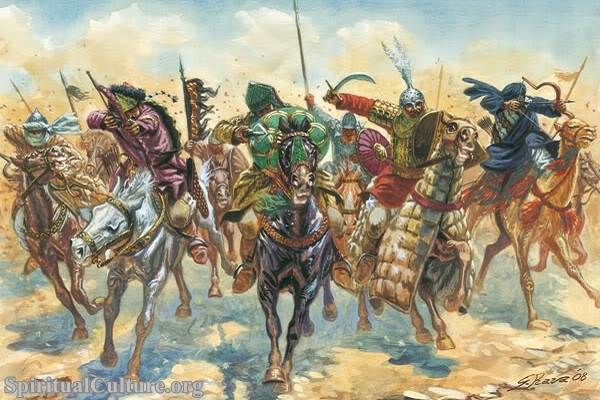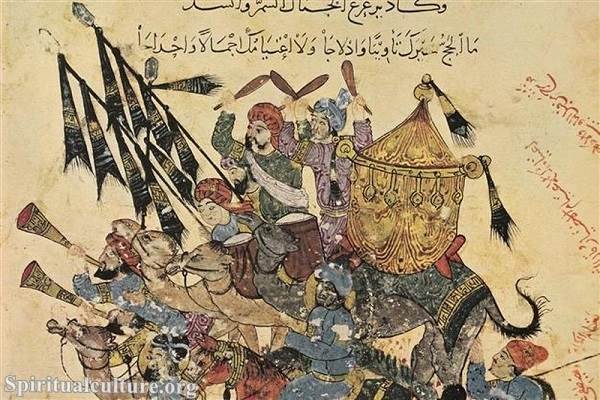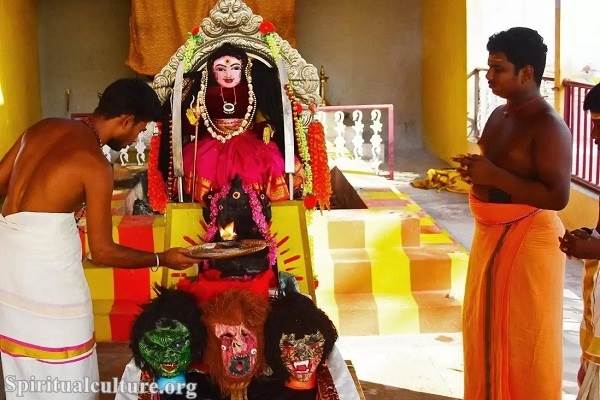Each year, millions of Muslims from every corner of the globe converge upon the holy city of Mecca. They come not in luxury, not in pride, but wrapped in simplicity — their hearts set on something greater than themselves. This is Hajj, the sacred pilgrimage, one of the five pillars of Islam. It is not merely a journey across distance, but a journey inward — a movement of the soul toward surrender, humility, and unity.
In this article, Spiritual Culture invites you to walk this path with reverence. Together, we will explore not only the steps of the pilgrimage, but also its deeper meaning — how this ancient ritual offers spiritual clarity and binds a diverse Ummah (community) into a single, beating heart. Whether you are Muslim or not, seeker or skeptic, Hajj holds a message: that we are one, under God, and that sacred movement can transform the soul.
The Pillar That Stands for All
Hajj: A Command, a Calling
Among the five pillars of Islam — Shahada (faith), Salah (prayer), Zakat (charity), Sawm (fasting), and Hajj (pilgrimage) — Hajj is unique in its physical and collective nature. It is required once in a lifetime for every adult Muslim who is physically and financially able:
“And [due] to Allah from the people is a pilgrimage to the House – for whoever is able to find thereto a way.”
— Qur’an, Surah Al-Imran 3:97
This is not a vacation or a retreat. Hajj is an act of total submission. It is a divine invitation — a command, yes, but also a gift — calling the soul back to its source.
A Journey of Physical, Emotional, and Spiritual Depth
The rites of Hajj are not symbolic alone; they are embodied actions. From circling the Kaaba to standing on the plain of Arafat, each movement echoes ancient stories and spiritual truths. Pilgrims sweat. They walk. They wait. They weep. In every step, the ego is softened and the heart is stirred.
Retracing the Steps of Abraham
A Lineage of Surrender
To understand Hajj is to return to the story of Prophet Ibrahim (Abraham) — the patriarch honored in Islam, Judaism, and Christianity. His unwavering submission to God, willingness to leave his family in a barren desert, and readiness to sacrifice his son all live within the rituals of Hajj.
“Indeed, this was the clear trial. And We ransomed him with a great sacrifice.”
— Qur’an, Surah As-Saffat 37:106–107
Pilgrims remember this not as myth, but as living faith. Each rite — from the Sa’i (running between hills) to the animal sacrifice — honors the endurance of Hagar and the devotion of Abraham. Their stories become our steps.
Zamzam: Water from the Unseen
In the barren desert, Hagar ran between the hills of Safa and Marwah searching for water for her child. Her trust in God was answered with the well of Zamzam — which flows to this day.
Pilgrims drink from Zamzam not just to quench thirst, but to remember: when all seems lost, faith opens unseen springs.
Shedding the Self: The State of Ihram
Equal Before the Divine
Before entering Mecca, pilgrims must assume the state of Ihram — a condition of spiritual purity and humility. Men wear two unstitched white cloths; women dress simply and modestly. Jewelry is removed. Status erased.
There are no kings in Ihram. No servants. No celebrities. Only souls before their Creator.
“O mankind, indeed We have created you from male and female and made you peoples and tribes that you may know one another.”
— Qur’an, Surah Al-Hujurat 49:13
This radical equality is not just visual. It is visceral. Pilgrims eat together, sleep in simple tents, pray shoulder to shoulder. In Ihram, we glimpse what the world might be if humility replaced hierarchy.
Tawaf: Circling the Heart of the World
The Kaaba and the Cosmic Center
At the heart of the Grand Mosque in Mecca stands the Kaaba — the cube-shaped house of God, rebuilt by Abraham and his son Ishmael. It is not worshipped, but honored as a symbol of divine oneness.
Pilgrims perform Tawaf — circling the Kaaba seven times — in unison, like stars around a center. This is not chaos but choreography. A rhythm of remembrance. A dance of surrender.
Each turn dissolves a layer of self. With every rotation, the ego loosens and the soul realigns to its true axis — God.
The Day of Arafah: The Soul’s Summit
A Day Like No Other
Of all the rites of Hajj, the standing at Arafah is the most essential. It is here, on this sacred plain, that pilgrims gather from noon until sunset in prayer, reflection, and pleading.
This is the closest many will come to the Day of Judgment — standing under the sun, wearing white, nothing to shield them but their sincerity.
The Prophet Muhammad (peace be upon him) said:
“Hajj is Arafah.”
— Hadith, Sunan Ibn Majah
The Day of Arafah is the heart of Hajj. Sins are forgiven. Hearts are broken open. A lifetime of longing rises in a single cry: “Here I am, O Allah!”
Sacrifice, Symbol, and Sincerity
Eid al-Adha and the Offering of the Heart
After Arafah comes the act of Qurbani — animal sacrifice — commemorating Abraham’s test of faith. But the essence of the offering is not the animal. It is what it represents:
“Their meat will not reach Allah, nor will their blood, but what reaches Him is piety from you.”
— Qur’an, Surah Al-Hajj 22:37
Pilgrims — and Muslims worldwide — are reminded: What matters most is the heart behind the deed. What are we willing to surrender? What attachments are we ready to let go?
The Stoning of the Devil: Defiance with Pebbles
A Sacred Stand Against Ego and Evil
At Mina, pilgrims cast pebbles at three pillars, symbolizing Satan’s temptations. This act — called Ramy al-Jamarat — reenacts Abraham’s rejection of the devil.
This is not mere symbolism. It is defiance. Each stone says: I will not bow to greed. I will not follow fear. I will resist hate. I choose God.
The pebbles may be small, but the gesture is mighty. Pilgrims leave Mina not only purified, but armed with courage to return to a world full of distractions and deceptions.
Unity in Diversity: A Global Gathering of Faith
One Ummah, One Song
Nowhere on earth is the universality of faith more visible than in Hajj. The languages are many, the faces varied, the garments simple — yet the prayer is the same:
“Labbayk Allahumma Labbayk” — “Here I am, O Allah, here I am.”
Here, a Nigerian farmer prays beside an Indonesian teacher. An American convert stands behind a Syrian refugee. In this sea of surrender, all are one.
Hajj melts the boundaries of race, class, and nationality. It births not just personal purification, but global solidarity.
Hajj as a Mirror of Life
Leaving and Returning
The journey of Hajj begins with leaving — but its true power is found in return. Pilgrims go back to their homes transformed: sins forgiven, priorities reordered, hearts softened.
They return with fewer words, but more wisdom. Fewer attachments, but deeper devotion.
Hajj is not the end of a journey, but a new beginning. A reminder that every step in life can be sacred — if walked with God.
Reflect and Reimagine
Hajj is more than a rite. It is a revelation.
It teaches that faith is not confined to words but expressed through movement, intention, and community. It shows that humility is strength, that surrender leads to freedom, and that the soul longs to return to its source.
In a world of division, Hajj whispers unity. In a time of ego, it calls us to selflessness. In a society of speed, it teaches stillness, patience, and presence.
Whether you are Muslim or not, let the spirit of Hajj touch you. Let it remind you that sacredness is not in distant lands, but in the way you walk through this world.
You, too, are on a pilgrimage.
And the divine is never far.




